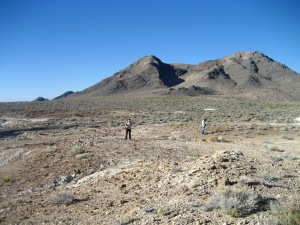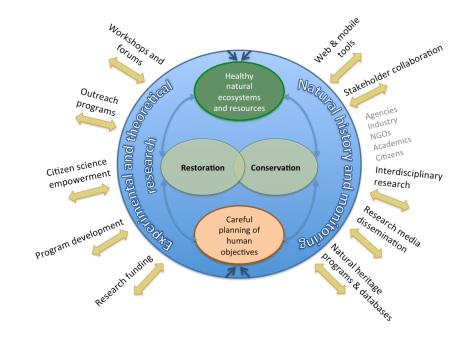This winter and spring I am teaching a fantastic and unique class at UC Davis with TA Kate Zamenick. In Experimental Ecology and Evolution in the Field we have two consecutive quarters to work with some of the most motivated and creative ecology undergrads at UC Davis. We will determine a research question, implement a field experiment and write a paper for peer review. The class is keeping a blog as a group laboratory and field notebook and using #eve180 on twitter to share information. In the next two weeks we will determine our question and develop our design. Can’t wait to see where the next few weeks will take us!
Information management
Measuring Impacts of Solar Development on Mojave Desert Plants
by Emil Morhardt
The massive development of wind and solar generating facilities in California’s Mojave Desert puts California way out in front of the rest of the US in generation of renewable electricity, but at the same time the development drastically alters the desert ecosystem. Installation of photovoltaic arrays seems to require grading the land flat, removing all existing vegetation, and since there will be nothing to eat, all of the animals as well. To those who haven’t travelled this wild desert during a verdant spring—something that happens only every few years—it might seem barren. But I’ve camped out in the middle of it many times in the spring when it is lush, covered with desert flowers, and alive with birds and other animals; to me it is the epitome of virgin wilderness. (My wife and I even wrote a book about it and took a lot of plant pictures…see reference…
View original post 470 more words
Fueling conservation and restoration – a figure of connectivity
How do we use the multiple tools of conservation and restoration — in both basic and applied science arenas, and related non-science disciplines — to foster healthy natural ecosystems? I developed this diagram to express the connections that I see between many levels.
Careful planning of human objectives is a foundation for the maintenance of healthy natural ecosystems, processes, and resources through the actions of restoration and conservation science. These actions require both natural history and theoretical research, and active feedback and decision-making processes, such as adaptive management. Education, information science, interdisciplinary collaboration, and program development feed into the central processes, fueling efficient and effective restoration and conservation. There are no uni-directional arrows; the network grows stronger with improved connectivity between all levels of organization.
Rare Plant Fact Sheets for Ash Meadows

As part of the Rare Plant Monitoring Protocol for Adaptive Management that we are developing for Ash Meadows National Wildlife Refuge, Karen Tanner and I have created these Rare Plant Fact Sheets and Rare Plant Observation Record Forms so that citizen scientists and staff alike can explore rare plants on the refuge, find populations, report observations and new localities.
Let’s us know what you see out there on the refuge! When you see them in a new or interesting place, we would greatly appreciate it if you would fill out and submit an Ash Meadows Rare Plant Observation Records (prints as 2 half sheets). If you head out to Ash Meadows, you can print out a few of these and the Rare Plant Fact Sheets to have in your vehicle or backpack. Or add them as pdfs to your mobile device! If you see rare plants in a new location (not on the maps) or in a location that is directly or indirectly impacted (in a possible or negative way) by management actions make an observation by filling out ALL of the fields on the form.


